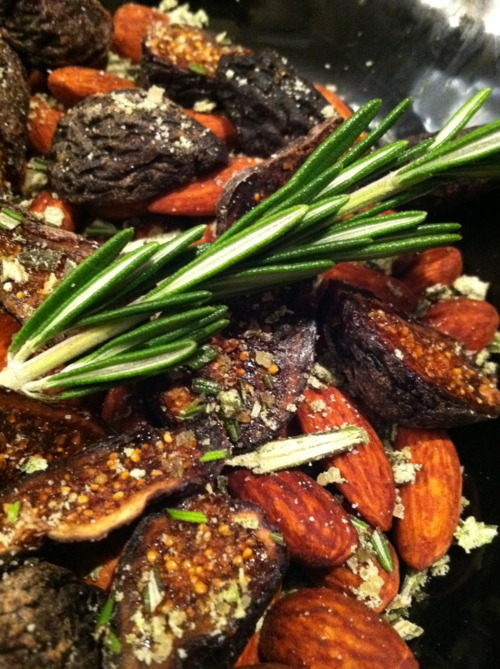Making your own herb salt is super easy and provides you with a constant source of that “special something/finishing touch” for everything from fried eggs to potatoes to roasts to nuts.

(Like the neat little label? As a chef that does alot of recipe-testing at home, I can be very OCD about labeling. And I admit I get a bit Gollum-ish when it comes to my labelmaker. It’s just so satisfying to see all my flours and spices and ground nuts and whatnot all smartly named and sorted. It’s that whole “outside order reflects inside order ” (or in my case, sub “reflects” for “disguises” and “order” for “disarray”).)

But anyways, back to herb salt. You can make it using a mortar and pestle or with a food processor. And you can pretty much use any and all herbs you want. It’s an especially excellent way to use up the excess fresh herbs you may have floating around in your fridge, or ones from your garden at the end of the season. Often, I buy large bunches of tarragon, for example, for a certain recipe and end up wasting half of it because even though I love tarragon, I don’t necessarily want it in everything I cook for a week…
Here are the recipe ratios. Everything else is up to you, flavor-wise.
1:1, Salt: Dried herbs, crushed
2:1, Salt: Fresh herbs, minced fine
Use Kosher salt if you can, and store the prepared salt in plastic containers or glass jars with tightly-fitting lids. (I keep mine in the fridge, but most culinary expert sources say you can keep it in your cupboard.)
The uses for Herb Salt are pretty much endless. Here I tossed my Rosemary-Sage salt with tamari almonds and halved dried black mission figs.

A delicious and beautiful Autumn-y pre-dinner snack, especially when paired with a nice glass of Pinot Noir.
It’s such an easy way to experiment with various flavor combinations and seasoning uses. Basil salt with parm on popcorn? Tarragon salt on your boiled egg? Once you have this stuff on hand, you’ll wonder what you did without it.
